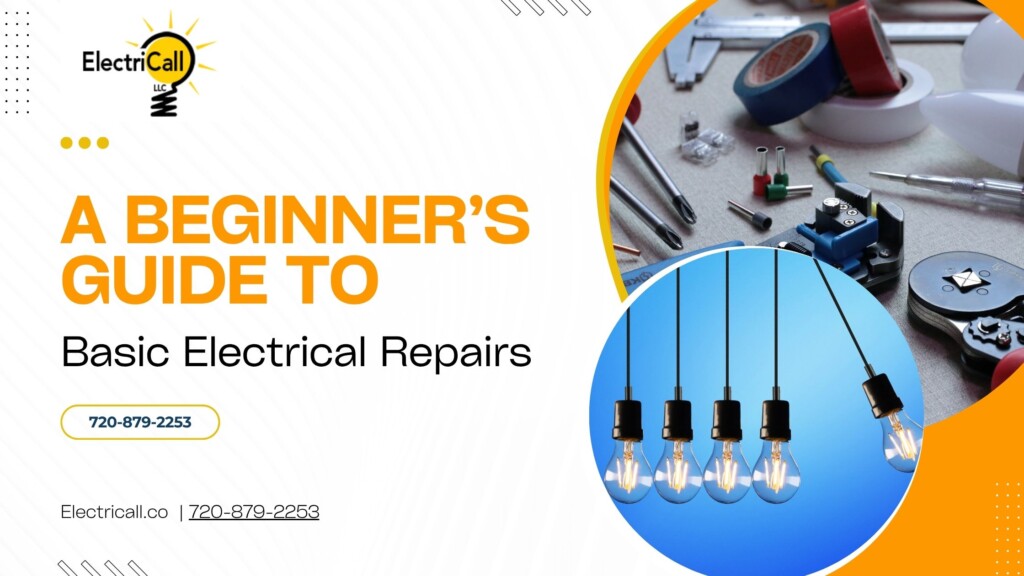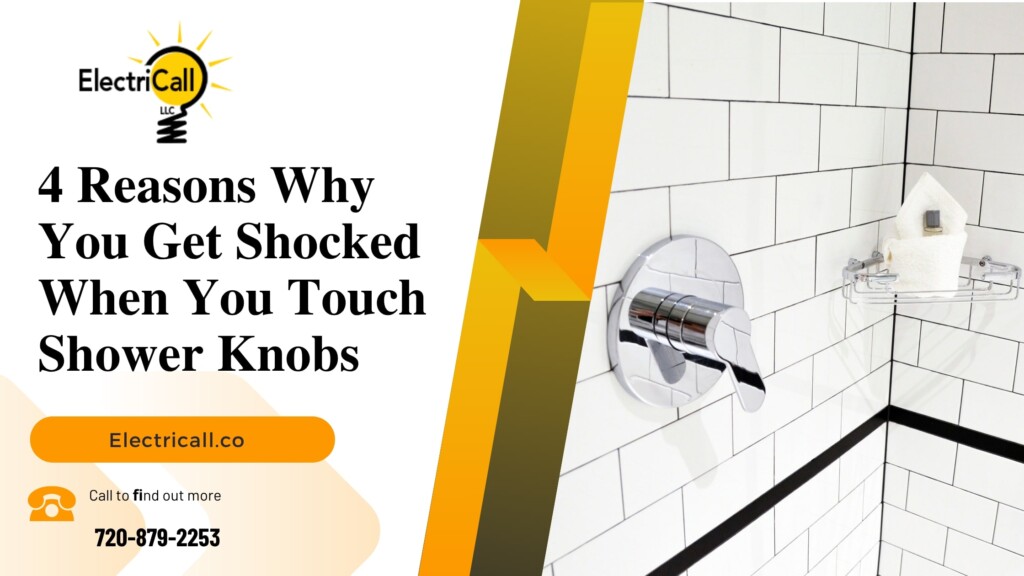
If you are considering selling your home, the best way to enhance its value is by going for improvements that make it more sellable. Nothing will bring you greater returns on investment than correcting the flaws in your home.
From energy-saving upgrades to modern smart home technologies, electrical improvements are the most profitable way of correcting electrical flaws in houses, especially older ones.
Read on for more about the best and most valuable electrical improvements for your home.
Don’t Wait To Upgrade
Maybe this is not the best time to sell your home. Although the real estate market has been in a spike for the past five or six years, demand is now falling due to a rise in mortgage interest rates and an increase in housing inventory.
That means buyers are now unwilling or unable to afford the high mortgage rates, and you may have to accept lower prices than you would like. Fortunately, Denver, CO remains an attractive real estate market, and this phenomenon is temporary. Patience is all it requires.
Other sellers are also upgrading their homes as they wait for market conditions to improve. Electrical improvement is the answer to making your home stand out in the market when the time comes for you to sell, and you can enjoy the benefits of home improvement while waiting to sell.
What To Consider Before Making Electrical Improvements In Your Home
If you wish to get the most benefits out of the electrical improvements you make in your home, you must work according to a plan.
The electrical planning for a house begins by considering these factors:
· Immediate and future electric power needs – is your power supply sufficient for current and future needs? The electric installations in older homes may be insufficient to feed modern electrical appliances.
· Location of wiring for electrical systems – in many older homes, sockets may be few and inconveniently placed. Consider what convenient placement would be for the future homeowners.
· Other remodeling considerations – The placement of the electrical system will affect other remodeling projects, and many remodeling jobs like the kitchen and bathroom may include an electrical remodel as well.
· Costing plan – Is the electrical remodel cost a sensible investment? Remember that your intention is to recoup the home wiring cost.
· Lighting installations – the type and location of lighting features are significant selling points. Aim for efficiency, security, and attractiveness. For instance, chandeliers may have been the trend once, but less so now.
· Electric and building codes and insurance needs – Electric and building codes specify the bare minimum requirements for electric installations in a home. If your home is not up to standard, it may not even be sellable.
A qualified electrician must install and certify electrical improvements if you wish to sell your house in Arvada, CO.
10 Electrical Improvements to Boost Your Home Value
Here are 10 electrical improvements that will boost the value of your home when you sell:
1. Install A New Breaker Panel
At ElectriCall LLC, we believe installing a new breaker panel is the starting point for many home electrical upgrades. Many older homes come with a 100-ampere panel which is insufficient for the electric demands of a modern home. Upgrade to a 200-ampere electric panel with spare breaker options.
An electric panel breaker replacement results in more efficient energy management, replacing appliances that require more power. Appliances that require 240V outlets need a panel upgrade.
Though costly (around $2000), installing a new breaker panel enhances the value of your house when prospective buyers see that the home can meet their electric needs adequately and safely.
Because a new breaker panel significantly reduces the risk of electric-sparked fires, your home also becomes attractive to insurers who may accept lower premiums.
2. Install Three-Pronged Grounded Outlets
Three-pronged outlets can take in both three-pronged and two-pronged plugs, while two-pronged outlets will not accept three-pronged plugs without dangerous modification. Three-pronged plugs are becoming the norm now, as the third prong incorporates a grounded wire to ensure safety.
Since many appliances now sport three prongs as standard, three-pronged outlets are more universal and indispensable.
While three-pronged outlets will not shoot the value of your home through the roof, two-pronged outlets are a flaw that will make your home unattractive to buyers.
3. Consider Installing GFCI Protection
GFCI, Ground Fault Circuit Interrupter, is a mechanism to protect you from electrocution by shutting off power quickly in the event of a ground fault.
GFCIs are a legal requirement in Colorado, mandated to be installed in wet areas of high electrocution risk like kitchens, bathrooms, unfinished basements, specific outdoor locations, and within six feet of a laundry sink or water heater.
Since they are a legal requirement, your home has no commercial value until you have complied with and installed GFCI outlets.
4. Replace Damaged Outlets and Switches
Electrical improvement often involves little more than replacing damaged outlets and switches.
Besides the obvious danger damaged outlets and switches pose to life and property, they are an eyesore that puts off any prospective buyer, as they give off the impression of a rundown property.
Buyers’ perception of your home determines how much they are willing to pay. While it is not guaranteed they will give outlets and switches in good condition a second look, damaged switches are unmissable.
5. Replace Convenience Outlets Where Extension Cords Are Necessary
Useful as they are, electric cord extensions around Denver are an unsightly inconvenience that put off today’s discerning homebuyer.
You can improve the attractiveness of your property by replacing the extension cables with convenience outlets in all the necessary places.
6. Replace and Upgrade Light Fixtures
Replacing and upgrading your light fixtures is one of the electrical ideas you can implement to boost the value of your home.
First, have an electrician and lighting design expert assess your lighting needs regarding efficiency, safety, and aesthetic appeal.
The right light fixtures use energy efficiently and create an ambiance that resonates with the buyer. For instance, LED and recessed lighting are the current trends, being both modern and energy efficient.
Outside, you can add light fixtures in darker areas to increase visibility and security, which makes the property attractive to buyers.
7. Backup Power Source
Power outages in Denver, CO, and Arvada, CO, are not uncommon. When they occur, power outages may interfere with your refrigerator’s air conditioning, heating, and food. A home with power backup will therefore be more attractive to buyers.
You can buy a generator and hook it onto your electrical system to take over when the power goes out. An electrician in Arvada, CO, can help integrate the generator into your electrical system if you live in the city.
Installing solar panels will guarantee a power supply and can earn the homeowner money, enhancing the property’s value.
8. Rewiring
Old or damaged wiring is a flaw that will make your house harder to sell. For starters, if the wiring is over twenty years old, rewiring may be necessary to bring it up to code. Also, insurance companies will charge a higher premium to insure it as they will deem it risky. Old wiring poses a risk to people and property, and buyers will be reluctant to buy your house.
The cost of rewiring a house can be quite significant. For instance, in Denver, CO, the average cost to rewire a home ranges from $2000 – $20,000, depending on the square footage and other factors. It is impractical to expect to recoup that from selling your home. However, old and faulty wiring will drive the value of your home very low. It may even be hard to sell if an inspection reveals the flaw.
Your home wiring costs bring the property’s value to its actual level.
9. Improve the Interior and Exterior Lighting
Improving interior and exterior lighting beyond functionality certainly increases the commercial appeal of your home. Properly placed lighting can enhance the look of the living space. A small room may be made larger and a dull one livelier with lighting.
When you put your home on the market, exterior lighting is excellent for your home’s curb appeal.
As well as correcting flaws, upgrade the interior and exterior lighting to add dollars to your asking price.
10. Childproof Power Outlets
Childproofed power outlets uniquely appeal to buyers with young children or who intend to have a child soon. Young parents are naturally anxious about their child’s safety, and a home that takes that into account will pique their interest more than others.
Conclusion
All your electrical improvements won’t do much for your home value unless done by a professional electrician.
Many buyers, banks, insurance companies, and local authorities want proof that the property has been wired safely. Only a licensed electrician can provide such certification.
In Arvada, CO, a search for ‘residential electrician near me’, ‘best electrician near me‘, or such terms will bring up a list of Arvada electricians.
In Denver, CO, a search for terms like ‘electrician around me’ will bring up a list of electrical companies near Denver.



